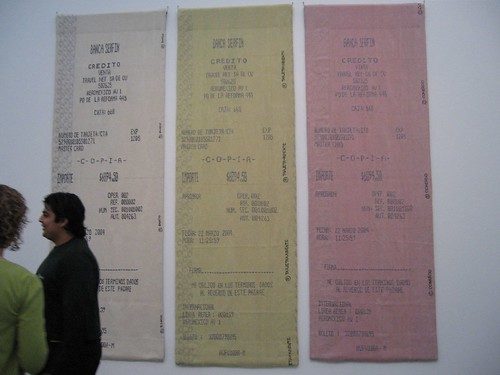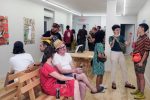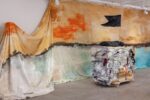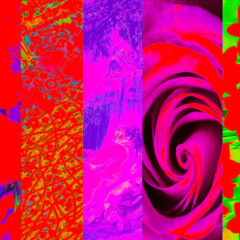
As soon as I saw Ed Ruscha’s Industrial Strength Sleep tapestry at the Fabric Workshop and Museum, this piece by Mexican artist Gabriel Kuri popped into my mind. I had seen it last year at Chicago’s Museum of Contemporary Art, in an exhibit of work from Mexico (post here).
Kuri’s Trinity is a faithful reproduction of a computer-register receipt with the color copies. And it’s handwoven in Mexico, which of course raises issues of the values of hand work vs. computer-generated stuff. At this moment of financial meltdown, it’s a nice reminder of the need to get back to what’s real, all you high-flying wizards of tricky Enron computations and smoke-and-mirrors financial instruments.
Ruscha’s terrific work is a computer-generated copy of something that was hand-made, an acrylic painting of his from 1989 (Roberta’s post here).
This is just a brief observation about what’s going on that I find interesting–the confluence of the hand-made and the computer and the weaving together of meanings– plus deadpan humor.
There are other people working in tapestry at the juncture where computers and hand-work meet. I’m thinking of Lia Cook, who seems to come from a fiber methodology starting point. ( posts here and here)
I was not thinking about Kehinde Wiley‘s ultra-hip tapestry, from Cerealart, which also was digitally produced (in France), but I happened to stumble on it when I put “tapestry” in artblog’s Google search engine. The computer used in Wiley’s weaving process seems to be outside the discussion in that piece, just an artifact of how it got made. Nor was I thinking about the wonderful hand-woven William Kentridge pieces recently shown at the PMA–no computer involved. Those both seem to me to be something else entirely.









